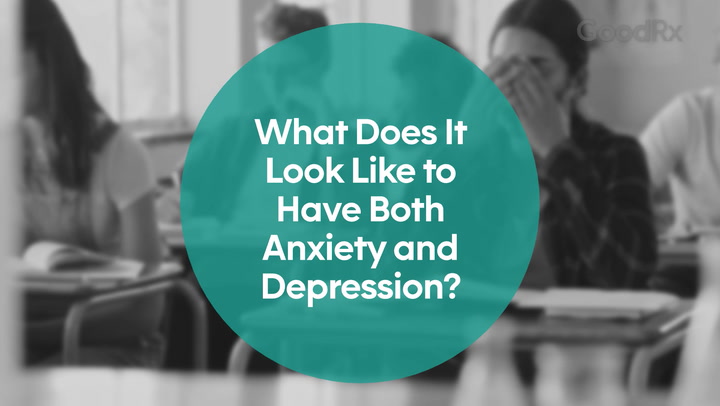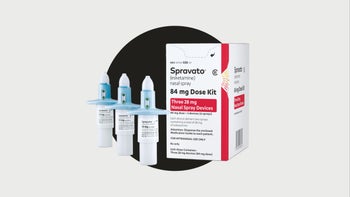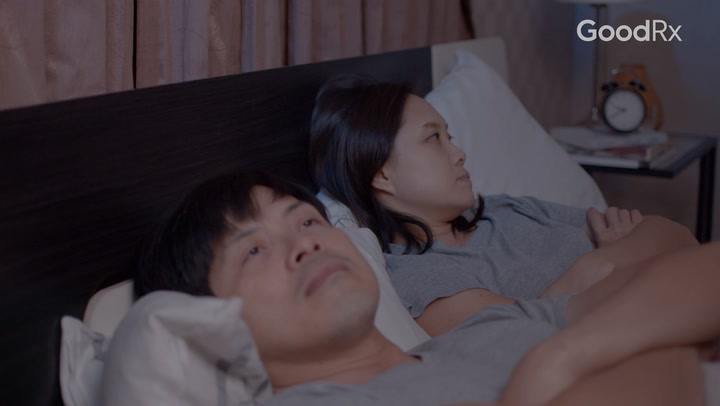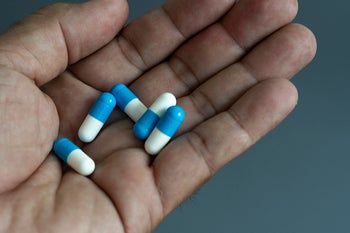
Your Guide to 5 Common Types of Antidepressants
Key takeaways:
All types of antidepressants are similarly effective for treating depression, but some cause more side effects than others.
Selective serotonin reuptake inhibitors (SSRIs) are the most common antidepressants prescribed. But serotonin and norepinephrine reuptake inhibitors (SNRIs) and bupropion (Wellbutrin XL) are also popularly prescribed options.
If you’re experiencing certain side effects from one type of antidepressant, switching to another may help relieve them.
Table of contents

Major depressive disorder — commonly referred to as depression — is characterized by symptoms, such as loss of interest, low energy, and feelings of guilt or hopelessness that have been present for more than 2 weeks. It is often treated with antidepressants, with or without psychotherapy.
But with so many antidepressants available, which ones are the most effective? Here, we’ll discuss the various types of antidepressants available and how you and your prescriber can decide which one is the best choice for you.
What are the different types of antidepressants?
There are five common types of antidepressants:
Selective serotonin reuptake inhibitors (SSRIs)
Serotonin and norepinephrine reuptake inhibitors (SNRIs)
Tricyclic antidepressants (TCAs)
Monoamine oxidase inhibitors (MAOIs)
Below, we’ll discuss some well-known antidepressants and which classes they belong to.
Keep in mind: We will not be discussing the risks, warnings, and drug interactions for each type of antidepressant in this article. Please talk with your mental healthcare team for more information on your specific medication.
1. SSRIs
Five well-known, SSRI medications that are FDA approved to treat depression include:
Citalopram (Celexa)
Escitalopram (Lexapro)
Fluoxetine (Prozac)
Paroxetine (Paxil)
Sertraline (Zoloft)
SSRIs are considered first-choice antidepressants. These medications are believed to work by raising the amount of serotonin — a hormone that helps regulate mood — in the brain. While effective for treating depression, it typically takes them about 2 weeks to start working and 4 to 8 weeks to experience their full benefits.
2. SNRIs
Three examples of well-known SNRIs that are FDA approved to treat depression include:
Desvenlafaxine (Pristiq)
Duloxetine (Cymbalta)
Venlafaxine (Effexor)
SNRIs are another first-choice option. They’re thought to work by raising levels of serotonin and norepinephrine. Norepinephrine helps boost alertness and focus. Like SSRIs, these medications can also take 2 weeks to start working, and 4 to 8 weeks to fully work.
Search and compare options
3. Atypical antidepressants
This group includes antidepressants that don’t fit into other medication classes. Five notable commonly prescribed atypical antidepressants are:
Bupropion (Wellbutrin XL)
Bupropion / dextromethorphan (Auvelity)
Esketamine (Spravato)
Mirtazapine (Remeron)
Trazodone (Desyrel)
How some of these types of antidepressants work isn’t fully understood. Bupropion and mirtazapine are as effective as SSRIs and SNRIs. And both are considered first-choice options for treating depression. But trazodone can be helpful if a person has both depression and insomnia (trouble sleeping). Esketamine may be an option if you’ve tried at least two other antidepressants without success.
4. TCAs
There are several TCAs available, but four commonly prescribed examples are:
Desipramine (Norpramin)
Nortriptyline (Pamelor)
TCAs are thought to treat depression by raising levels of serotonin and norepinephrine in the brain. Some studies suggest that they may be more effective for certain people with severe depression. But they also have a greater risk of side effects. Because they aren’t as well-tolerated as previously listed antidepressants, they’re not first-choice antidepressants for most people.
5. MAOIs
The MAOIs that are FDA approved for depression include:
Isocarboxazid (Marplan)
Phenelzine (Nardil)
Selegiline patches (Emsam)
Tranylcypromine (Parnate)
MAOIs work by blocking a protein called monoamine oxidase (MAO). MAO’s job is to break down serotonin, norepinephrine, and dopamine. By blocking this protein, MAOIs help raise levels of these chemical messengers in the brain.
MAOIs are not typically recommended for most people with depression due to their risks of serious side effects, necessary dietary restrictions, and many medication interactions. However, studies have shown they can be effective for treatment-resistant depression — depression that doesn’t improve with other antidepressants.
Is there a best antidepressant?
Over the years, studies have compared various types of antidepressants. After reviewing the available research, the American Psychiatric Association found that no one antidepressant was more effective at treating depression than others. Instead, antidepressants are typically recommended based on factors like their side effects and whether you’ve responded favorably to a particular medication in the past.
Most people will start taking either an SSRI or SNRI. These medications are generally better tolerated than other antidepressants. And they can also treat other conditions that people sometimes have along with depression, like anxiety.
But in the end, the best antidepressant is the one that gives you the most benefits with the fewest side effects. Everyone’s journey to finding the right depression treatment is unique.
Quiz: Is your antidepressant working?
Which type of antidepressant is the most commonly prescribed?
SSRIs are the most commonly prescribed type of antidepressant. This is because they’re effective and well-tolerated with mild side effects for many people. With many SSRIs available as generic products, they also tend to be more affordable. SNRIs and bupropion are also common choices for similar reasons.
Which antidepressant has the least side effects?
There isn’t a definitive answer for this question. All antidepressants can cause side effects. And everyone tolerates them a little differently. Generally speaking, SSRIs and SNRIs are well-tolerated by most people. They also have good evidence supporting their long-term safety. Older antidepressants, like TCAs and MAOIs, tend to cause more side effects.
Which antidepressant works the fastest?
Spravato is the antidepressant that works the fastest. It can start providing relief within a few hours. However, Spravato has a number of serious risks and you can only administer it if you’re at your prescriber’s office. It’s also only FDA approved for treatment-resistant depression. So it’s not an available option for most people.
Auvelity is another faster-acting antidepressant. It can start relieving depression symptoms in as little as 1 week. It can also be prescribed just like most other antidepressants. So there’s no restrictions for its use, unlike Spravato.
Other types of antidepressants usually take a few weeks to kick in. Generally speaking, you can expect to experience some effects between 4 and 6 weeks after starting your medication. If you don’t feel any change after 8 weeks, let your prescriber know that it doesn’t seem to be working.
How does a prescriber decide which antidepressant is best for you?
There are several factors that help a prescriber decide which type of antidepressant may be best for you. These include things like success with an antidepressant in the past, other health conditions you may have, and side effects you’re concerned about.
If you’ve successfully taken an antidepressant in the past, this is always a good place to start. You’re more likely to experience benefits from a medication that has worked before. But if you’ve never taken medication for depression before, prescribers often look at the likelihood of side effects when choosing a medication.
Newer antidepressants, such as SSRIs and SNRIs, tend to be better tolerated than older ones. You might prefer SNRIs over SSRIs if you also have certain chronic pain conditions, such as fibromyalgia. This is because some SNRIs are also approved for these conditions.
Sexual problems, like erectile dysfunction, tend to be more common with SSRIs and SNRIs than with other antidepressants. If sexual side effects happen, bupropion may be a better choice. These side effects are very uncommon with this medication. Bupropion can also be added to your medication regimen to help with sexual side effects if your current antidepressant is working well for your depression.
As mentioned earlier, trazodone is a possible choice if you have both depression and insomnia. This medication tends to cause a lot of drowsiness as a side effect, so your prescriber may suggest it as a way of helping you sleep better.
Which antidepressant is the hardest to come off of?
One downside of SSRIs and SNRIs is that they can be difficult to stop taking. This is because these medications can cause withdrawal symptoms if your dose is lowered too quickly. Be sure to follow your prescriber’s instructions about how you should lower your dose.
Withdrawal symptoms from these antidepressants may include:
Flu-like symptoms
Insomnia
Nausea
Headaches
“Pins-and-needles” sensations
“Electric shock-like” sensations
If you experience these symptoms when trying to stop taking your antidepressant, let your prescriber know. But keep in mind that these symptoms are temporary and should resolve within 1 to 2 weeks.
Good to know: Not all SSRIs and SNRIs have the same risk of causing withdrawal symptoms after stopping them. SSRIs or SNRIs that last longer in the body have a lower risk. For instance, venlafaxine doesn’t stay in the body as long as fluoxetine. So, you may have a greater risk of withdrawal symptoms if you’re stopping venlafaxine compared to fluoxetine.
The bottom line
Depression is a common mental health condition that can be treated with a variety of medications. Selective serotonin reuptake inhibitors (SSRIs), serotonin and norepinephrine reuptake inhibitors (SNRIs), and bupropion (Wellbutrin XL) are some of the most commonly prescribed types of antidepressants. But, studies suggest that all antidepressants are similarly effective.
Because of this, prescribers typically select an antidepressant medication based on its possible side effects or its ability to treat other health conditions you have. Depression treatments should be personalized based on your needs and your response to medication.
Be sure to let your healthcare provider know how you are feeling after starting an antidepressant. So, if necessary, they can make any changes and prescribe the best type of antidepressant for you.
Why trust our experts?


We created this article for Therapy for Black Girls, an online space dedicated to encouraging the mental wellness of Black women and girls.
References
American Psychiatric Association. (2010). Practice guideline for the treatment of patients with major depressive disorder, third edition.
Endocrine Society. (2022). Adrenal hormones.
Kalin, N. H. (2020). The critical relationship between anxiety and depression. The American Journal of Psychiatry.
Luo, Y., et al. (2020). National prescription patterns of antidepressants in the treatment of adults with major depression in the US Between 1996 and 2015: A population representative survey based analysis. Frontiers in Psychiatry.
Moraczewski, J., et al. (2023). Tricyclic antidepressants. StatPearls.
Sub Laban, T., et al. (2023). Monoamine oxidase inhibitors (MAOI). StatPearls.
For additional resources or to connect with mental health services in your area, call SAMHSA’s National Helpline at 1-800-662-4357. For immediate assistance, call the National Suicide Prevention Lifeline at 988, or text HOME to 741-741 to reach the Crisis Text Line.


























